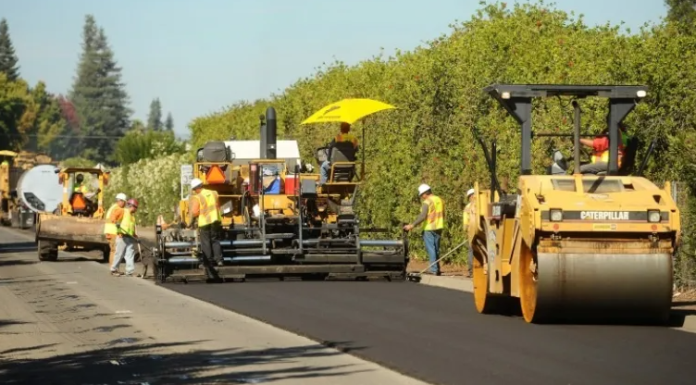California Construction News staff writer
Overall pavement conditions on the Bay Area’s nearly 44,000 lane-miles of local streets and roads landed remained ‘fair’ territory last year, with the typical stretch of roadway showing serious wear and likely to require rehabilitation soon. Data released last week by the Metropolitan Transportation Commission (MTC) put the region’s 2021 pavement condition index (PCI) score at 67 – the sixth consecutive year.
The grade is given to roads that are becoming worn to the point where rehabilitation may be needed to prevent rapid deterioration. out of a maximum possible 100 points
Officials say stagnant results underscore continuing challenges faced by city and county public works departments.
“The new pavement data is a bit of a mixed bag,” said MTC Chair and Napa County Supervisor Alfredo Pedroza. “The good news is that our counties and cities have been able to prevent major deterioration, thanks in large part to the state gas tax money they receive through the SB 1 local streets and roads program.
“The bad news is we’re still a long way away from our goal of bringing the Bay Area’s streets and roads into a state of good repair, which would raise the regional average into the mid-80s.”
PCI scores of 90 or higher are considered excellent – newly built or resurfaced streets that show little or no distress. Pavement with a PCI score in the 80 to 89 range is considered very good, showing only slight or moderate distress that requires primarily preventive maintenance. The good category ranges from 70 to 79.
Because major repairs cost five to 10 times more than routine maintenance, these streets are at an especially critical stage. Roadways with PCI scores of 50 to 59 are deemed “at-risk,” while those with PCI scores of 25 to 49 are considered “poor.” These roads require major rehabilitation or reconstruction. Pavement with a PCI score below 25 is considered “failed.”
San Francisco scored 74 and is the only one of the largest Bay Area cities to rank in the “good” category. San Jose, which has by far the largest street network in the Bay Area at nearly 4,500 lane-miles, ticked up one point last year with a three-year moving average score of 67.
Oakland’s three-year moving average also rose by one point to 53 (at-risk), but the city’s single-year score jumped nine points to 58 last year from just 49 (poor) in 2020.
“We’re proud to be picking up the pace for implementing our equity-driven paving plan,” said Oakland mayor and MTC Commissioner Libby Schaaf. “We’re delivering swift improvements with an approach that is recognized as a national leader in directing resources where they are most needed to provide all communities with the smooth, safe streets they deserve.
“Our progress is possible because Oakland’s voters made a game-changing investment by passing the Measure KK infrastructure bond in 2016. Oakland’s streets were badly underfunded for decades and there is much more work ahead of us. But we’re confident we’ll have the appropriate resources to continue making major progress together.” .
The Marin County city of Larkspur, which twice in recent years passed local sales tax measures dedicated to rehabilitating the city’s 65 lane-miles of streets, is the only Bay Area city to outpace Oakland’s year-over-year improvement, recording an 11-point increase to 76 last year from 65 in 2020. As recently as 2017, Larkspur registered one-year PCI scores in the “poor” range.
Cupertino once again tops the list of Bay Area pavement rankings for the 2019-21 period, with a three-year moving average PCI score of 84. Other cities with three-year PCI scores in the “very good” range include Orinda and Palo Alto (83); Dublin (82); Brentwood (81); and unincorporated Solano County (80).
The lowest-ranked pavement in the Bay Area was found in Pacifica, which recorded a PCI score of 42 for 2019-21. The only other jurisdictions with three-year average PCI scores in the “poor” range are Petaluma (44), Sebastopol and unincorporated Napa County (46), and Vallejo (48). The three-year moving average PCI score for the nearly 2,700 lane-miles of rural roads in unincorporated Sonoma County last year moved one point higher into the “at-risk” range (51) after many years in the “poor” bracket.














